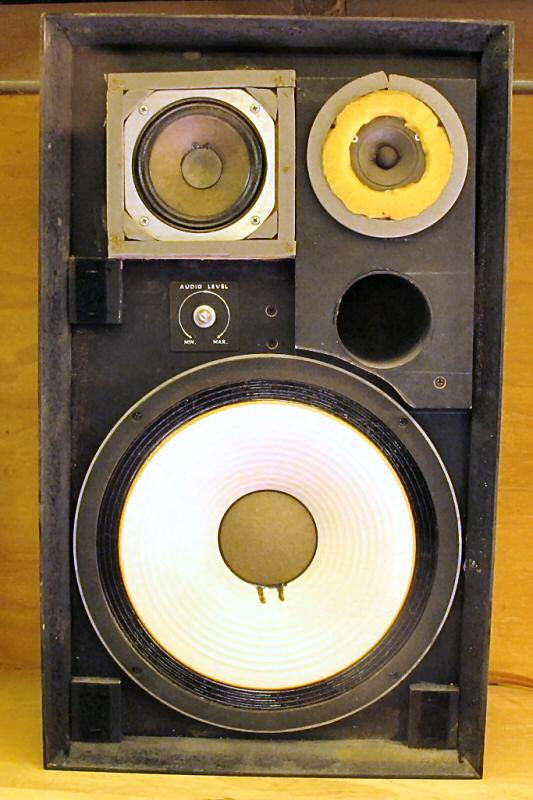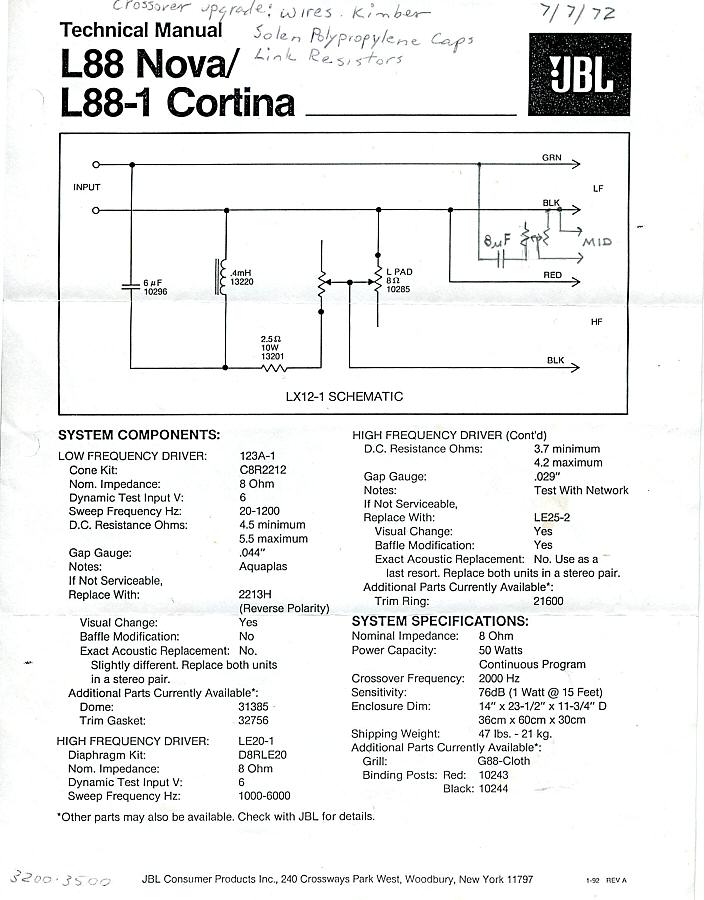The first time I opened up my JBL speakers I was confused, were they really running the 12" driver full range? I guess so, weird, totally weird. Reviewers talk about cheap crossover parts, how about no parts? The thing is it worked, everybody loved the sound in spite of all the flaws, I guess you had to be there in 1972 to understand. The L100's had no deep bass, the response rolled off real quick after 40 Hz, but that 40Hz was glorious for the rock n' roll we listened too. The L100's were also amazingly power hungry (76dB), they really needed a high power amp to strut their stuff but who could afford that in the early '70's. When I finally paired my L100's with a 120 watt high current amp I discovered what I had been missing.
My L100's actually started out as L88's. I bought them new in 1972, on sale for $188 pair. I did major surgery to them re-positioning the tweeter, and installing a sealed inner box for the midrange driver and the new crossover based on directions I received from the JBL factory. The L88's woofer and tweeter are the same ones used in the L100's in 1972. The 5" midrange is the LE5-2, the same as in the L100 and 4312.
While the speakers were apart I also did massive internal bracing and added another layer of 3/4" MDF to the speakers back, the results were a cleaner presentation with deeper, more defined, punchier bass since the cabinet was no longer flexing and damping the low frequencies. I used the pot to balance the new midrange and tweeter, I got real close and turned the dial until there was a solid center image between the two drivers. Back in '72 we didn't need no stinkin' measurements.
Not pretty but I keep the cloth grills on and they are my shop speakers after all.

